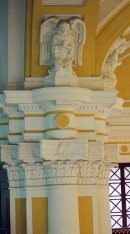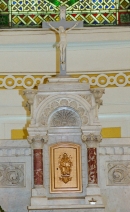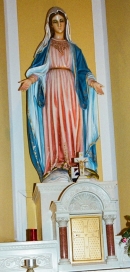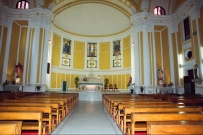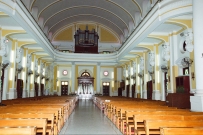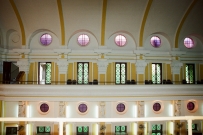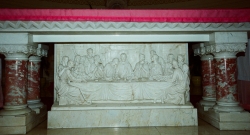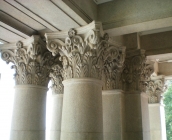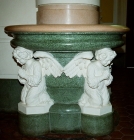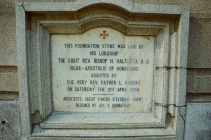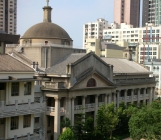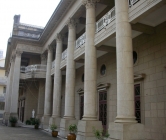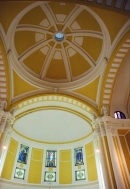
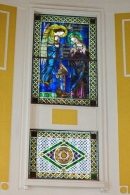
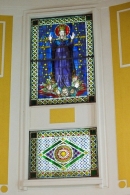
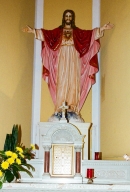
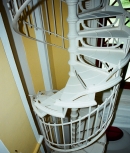
Christ the King Chapel
Just a stone's throw from the busy streets of Causeway Bay lies hidden from public view Christ the King Chapel, surrounded by schools, a hospital, orphanage and convent of the Sisters of St Paul de Chartres. Access is through St Paul's Hospital in Tunglowan Road, or, on Sunday mornings when it is open to the public, through St Paul's Convent School in Leighton Road.
Although as big as a church capable of accommodating 1,000 people, it is only a chapel for private use.
Designed by Mr Joseph V Chanatong in Roman style complete with a dome, there is an extensive use of Corinthian columns around the chapel. The top of the two-storey high Corinthian columns, which are round except those in corner positions, are decorated with detailed motif designs. The whole church has about 50 doors, the upper doors serving as windows as well. Above the panelled dark coloured glass side-doors are triangular gabled projections, called pediments. The front entrance can be reached by going up several steps past the four giant groups of round pillars, the two middle ones being double columns. On top of these columns is a triangular design with a big clock in the middle, and written under are the Latin words: REGEM REGUM VENITE ADOREMUS (Let us adore the King of kings). At the tip of this triangle stands the majestic statue of Christ the King, while higher up on the roof the bell tower is visible.
The Interior
Inside, on the right side of the entrance, there is a spiral staircase going up the choir. Aside from this there are two other staircases on either end of the balcony through a side door and hidden from view. A grand Blackett pipe organ can be seen in the balcony. Several doors around the balcony lead out to a portico - a roofed open space surrounding the three upper sides of the building. This upper portico has metal railings with some designs. As on the lower level, circular glass windows above the doors provide natural light during the day.
The apse, where the altar is located, is a vaulted semi-circular recess. The original altar, which is on a slightly raised platform, was attached to a panel with the tabernacle at the centre, and was enclosed in a circular communion rail, common in pre-Vatican II times when the priest celebrated Holy Mass facing the tabernacle. On top of the tabernacle, which was under a stone canopy, two kneeling angels were holding lamps on either sides. High on the wall behind the altar are two sets of three glass windows, one set smaller than and below the other. On two niches on the left and right wall, there were statues of St Joseph on one side, and St Paul on the other. Behind the altar two doors led to the sacristy.
The three upper glass windows behind the altar were later decorated with stained pictures of Jesus Christ in the middle. On the left is the Annunciation, and on the right the Assumption of Our Lady.
Life-size statues of Jesus and Our Lady dominate the two side altars.
History
After the Sisters transferred from Wanchai in 1915, Mother Felicie Jourdan, firm mover and force (with Rev Leon Robert MEP) behind this daring and major relocation, felt something was still missing - a chapel. Unfortunately she did not live to see the realization of her beautiful dream. She died in 1926, after having made plans and passing it on to her successor, Mother Marguerite de St Paul Nuss.
After his initial disapproval of the plan, Right Rev Enrico Valtorta DD, Vicar Apostolic of Hong Kong, laid the Foundation Stone in 1928 assisted by Father Robert. The new chapel was blessed and dedicated on 10 May l930 with six bishops concelebrating. Standing in the midst of such a host of works of charity and self-sacrifice, the chapel is fittingly dedicated to Christ the King.
At the beginning, the chapel was exclusively for the private use of the Sisters. Exceptions were allowed for spiritual exercises or retreats, ceremonies of religious clothing and professions, and for pious associations to hold their liturgy or special services.
